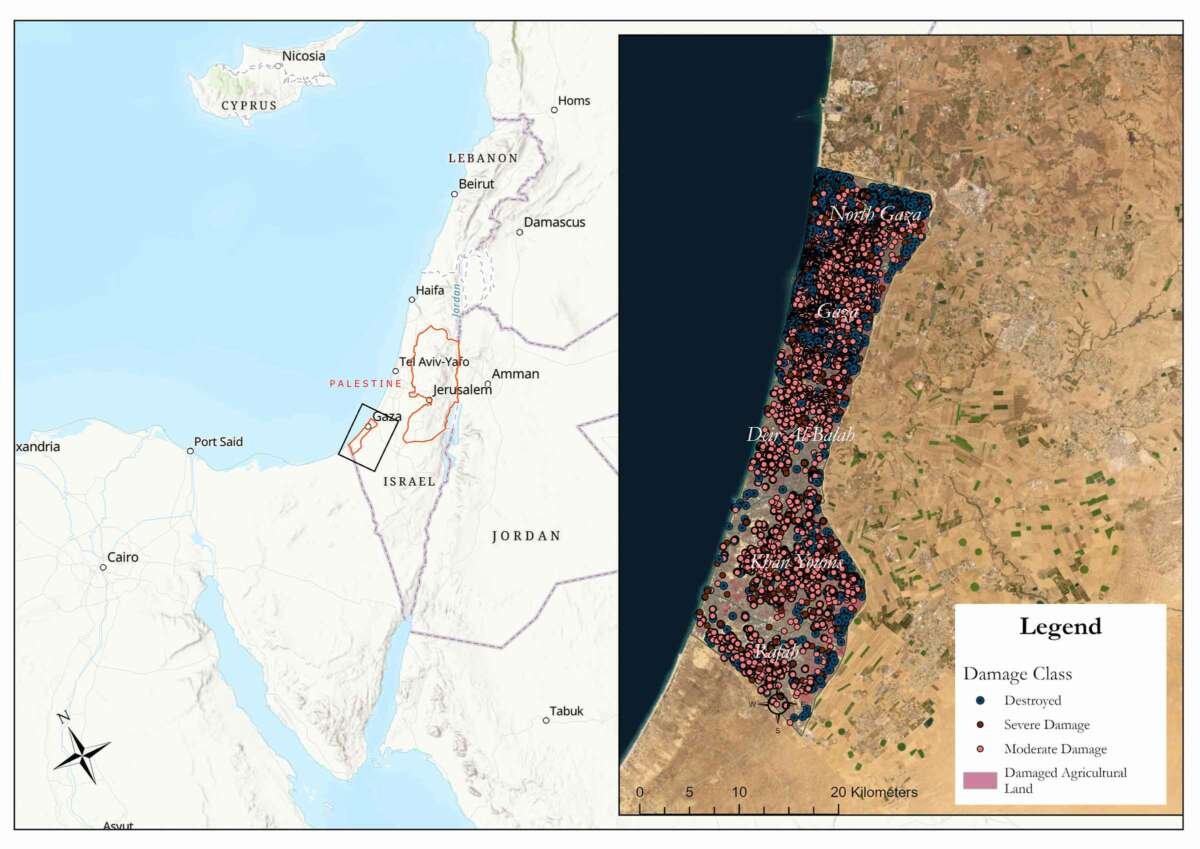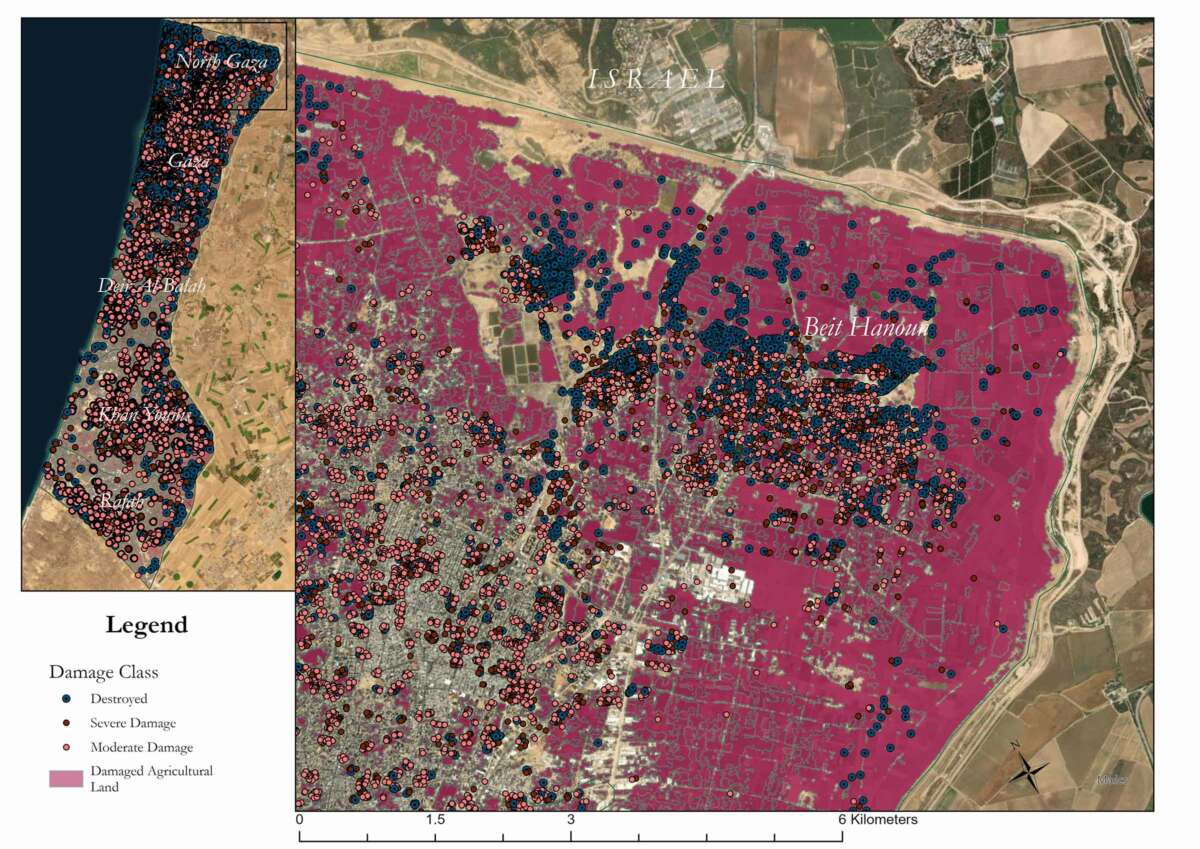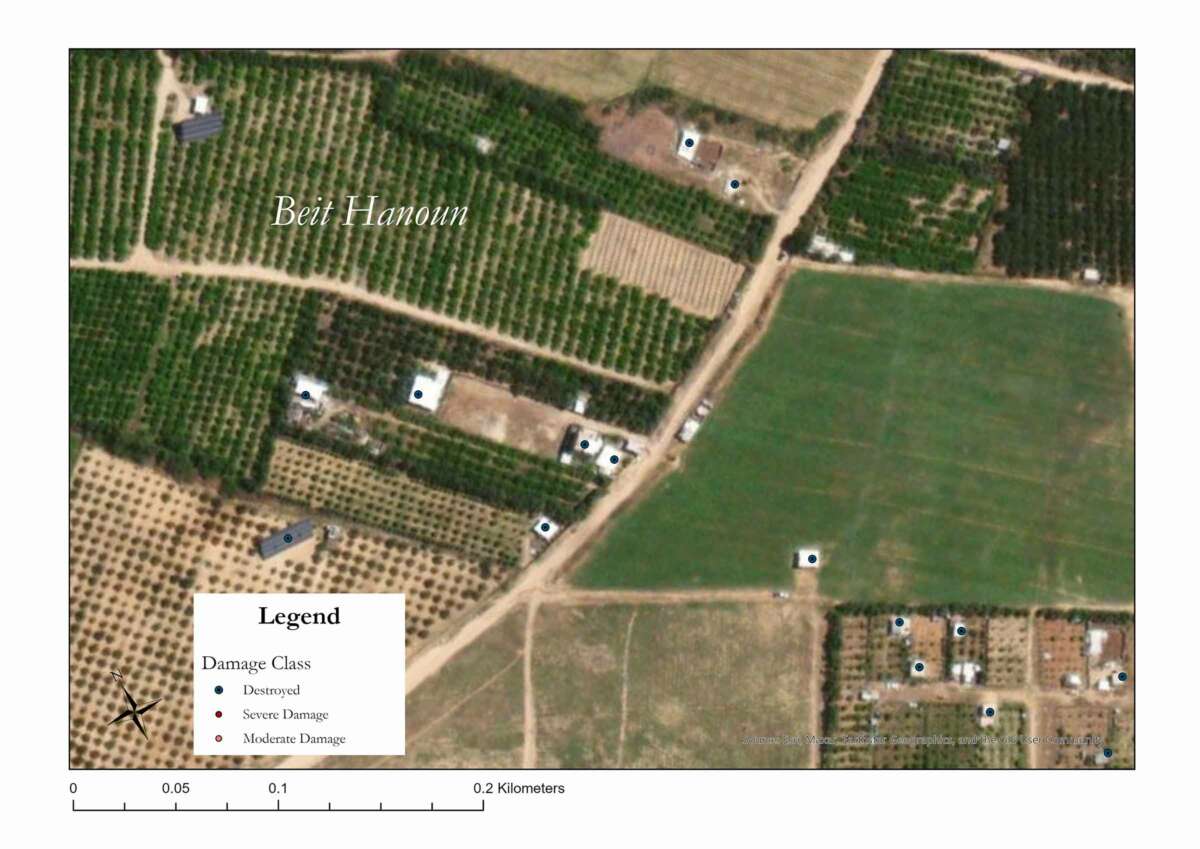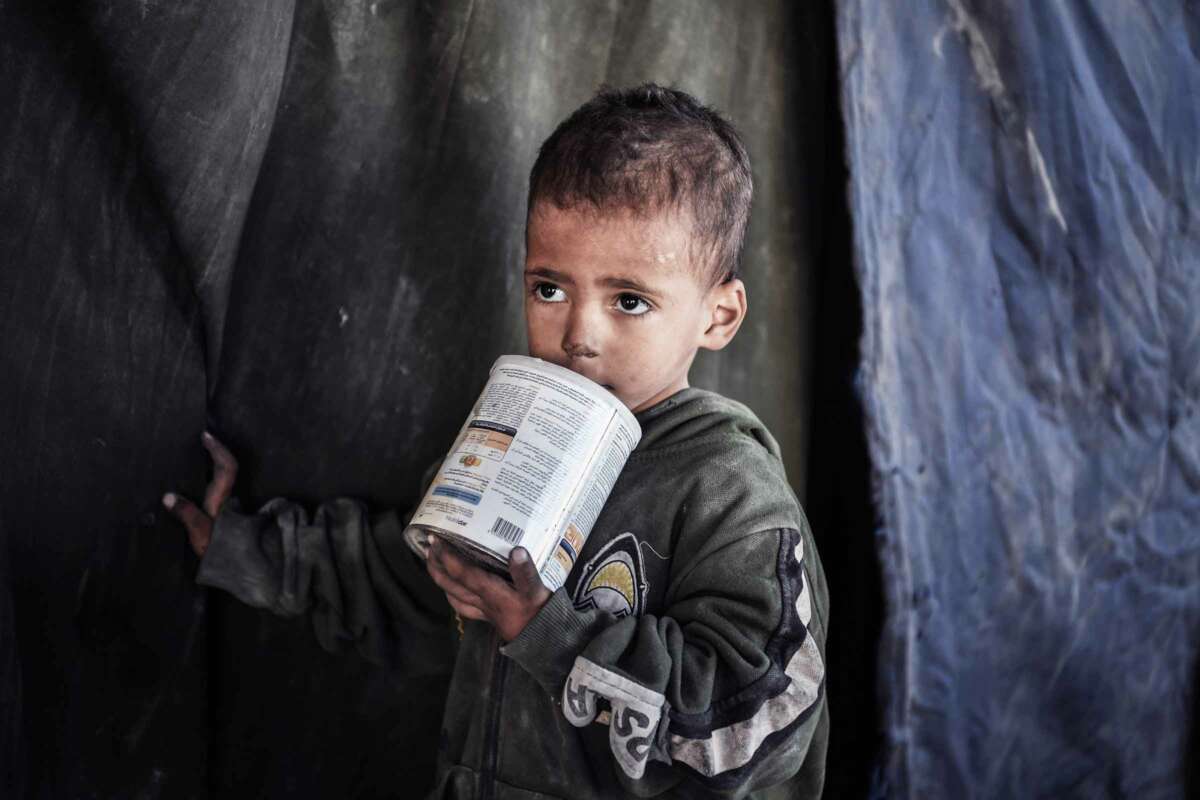Part of the Series
Struggle and Solidarity: Writing Toward Palestinian Liberation
Did you know that Truthout is a nonprofit and independently funded by readers like you? If you value what we do, please support our work with a donation.
As of this week, the top emergency relief official for the United Nations, Martin Griffiths, deemed Gaza all but “uninhabitable,” with its 2.2 million residents facing the “highest levels of food insecurity ever recorded.” Experts have attributed the escalating crisis to Israel barring food aid from entering and being distributed in the Gaza Strip. “The little food that does get in is very difficult to distribute due to the constant bombings, destroyed roads, frequent communication blackouts, and shelters overflowing with of hundreds of thousands of internally displaced people crowding into smaller and smaller areas,” according to a statement by Israeli human rights organization B’Tselem.
But the grave status is also the result of a legacy of attacks on all branches of the Palestinian food system. At least 32.6 square kilometers of arable land has been damaged as a result of wartime activities since October, including razing, vehicle movement, bombing and shelling. The damage, constitutes at least 18 percent of all agricultural land in Gaza, according to the latest available UN Satellite Centre (UNOSAT) data, though it is likely an underestimation, according to an interview with Moayyad Bsharat, regional coordinator for the global peasant movement La Via Campesina. The data was compiled from images taken by UNOSAT’s Sentinel-2 satellite, which were evaluated in comparison with the six preceding growing seasons, from 2017 to 2022, then analyzed and mapped by Truthout.
It’s as if the entirety of farmland in the U.S. states of Florida, California and Texas had been destroyed. Much like the most heavily damaged agricultural lands in Gaza, the three states serve as major fruit and bread producers.
Taken together with a new study published on Social Science Research Network on January 9, the agricultural land damage data provides a wider snapshot into the massive environmental impact of the ongoing bombardment of Gaza. Over the first two months alone, seven days of which were under ceasefire conditions, researchers estimate that 281,315 metric tons of carbon dioxide were emitted, with the majority of emissions coming from U.S. supply flights and other aircraft missions conducted by F-16 and F-35s, followed by the use of Israeli artillery, armored vehicles and Hamas rockets. The emissions constitute roughly the equivalent of 75 coal-fired power plants operating for a year and are greater than those of the annual emissions of 20 individual countries.
The study, which is the first to estimate the climate cost of the latest episode of violence, has been deemed a conservative estimate. Among other reasons, it does not include emissions stemming from damage to soil and agricultural systems, which has been far-reaching and is a major impact of warfare.

“Destroyed Again”
Saleh B, an olive farmer from eastern Deir al-Balah in the central Gaza Strip who requested a pseudonym fear for of their safety, told Truthout that much like all other elements of the bombardment, Israeli attacks on the Palestinian food system since Hamas’s surprise attack on October 7, have been extreme. “While the deliberate destruction of agricultural lands to keep us hungry and poor is nothing new to us, the scale and intensity are unprecedented and unlike anything we have witnessed before.”
Saleh’s family, which since 1956 has tended a grove of olive trees on a 1.5-acre parcel of land, has been the target of Israeli attacks for over two decades, he said. The most brutal personal attack to date came in 2000, when at noon, Israeli occupation forces bulldozed all 250 of his olive trees, the olive oil from which he depended on to support his family. With the help of Jordan and Palestine-based people’s organization the Arab Group for the Protection of Nature, the group that connected Truthout with Saleh and other growers over email, he has since recovered his orchard. But Saleh is not currently able to access his lands as they are being “indiscriminately bombed” he said.
The conflict has also wreaked damage on agricultural land in Israel, as The Times of Israel reports, leading to the formation of craters on the land of vegetable farmer Rahamim Mughrabi, in Netivot, Israel. Many Israeli farmers have attributed agricultural damage to Hamas rocket attacks. But as Mughrabi told The Times, Hamas attacks are “the least of his worries,” as Mughrabi’s farm is suffering more damage from the Israel Defense Forces (IDF), whose artillery fire recoil has pulverized the soil and formed dust clouds that have settled on protective nets, thus blocking sunlight and killing this season’s tomato, arugula and coriander crops. But while Israeli farmers have received the help of everyday citizens who have flocked to fields near the border with Gaza to fill in for Thai farmworkers who fled the country following Hamas’s attack, which killed 40 workers; Palestinian farmers like Saleh face major crop loss.
Eight miles away in northeast Gaza, beekeeper Obaida A, who requested a pseudonym, is unable to access her apiary. The city where she is from and where she keeps bees, Beit Hanoun, is located in the governorate that has experienced the greatest damage to agricultural land, with 39 percent damaged as of December, primarily impacting strawberries and potatoes.
Obaida’s father, also a beekeeper, was killed by an Israeli airstrike in 2006, while harvesting honey. In 2021, the majority of her own 50 hives were destroyed by Israeli smoke bombs. While she has been able to recover some hives, the area has been unreachable since October. “I am pretty certain they have been destroyed again,” Obaida said.

“We Feel We Are Targeted Because We Provide Sources of Food”
IDF attacks on the Palestinian food system extend to the waters. Meerab D is a fisher from Gaza, who, like Obaida, requested a pseudonym for safety and inherited the profession from his father. He told Truthout that the 15-year-old blockade has restricted his family and other fisherfolks’ access to Palestinian waters. Under the 1993 Oslo Accords, Israel agreed to a Palestinian fishing range of 20 nautical miles. That decreased to six nautical miles as part of a 2012 ceasefire, and then to three in 2013, in response to missiles fired into southern Israel, a move which “constitutes collective punishment and severely damages the livelihood of Gaza fishermen,” according to B’Tselem.
Much like attacks on other branches of the food system, Israel’s targeting of fisherpeople in Gaza has become almost routine, with 133 incidents of Israeli attacks on local fishers within Palestinian waters in 10 months of 2016 alone, according to a report by the Palestinian Centre for Human Rights. More recent attacks, including in August 2023, when Israeli naval forces opened fire and launched tear gas canisters toward fishing boats along the coast of the northern Gaza strip, prompted peaceful protest by 200 fishers.
Meerab says he was targeted in 2021, and lost most of his fishing nets. “The current situation is dire. With the harbor and boats extensively damaged, [we are left with] uncertainty about how we will be able to return to our work after the war ends,” Meerab said. “We feel we are targeted because we provide sources of food and protein in the context of the siege and food shortage.”
The extent of the current devastation to the food system is a direct legacy of years of Israel’s increasing grip on the region’s natural resources. As Leah Temper, an ecological economist at McGill University, told Truthout, the level of crisis at the moment is the result of “extremely precarious infrastructure being systematically targeted by Israel over the course of decades.”
Temper is the co-founder of a website called the Global Atlas of Environmental Justice, which documents and maps cases of environmental injustice across the world. It currently contains 3,942 entries, including three cases in Gaza: “Israel’s blockade and its effect on Gaza’s water supply and sanitation,” the “Israeli navy’s violent repression on Palestinian fisher people” and “the decimation of the Palestinian fishing industry.” The latter entry notes that since 1967, Israel has rendered 85 percent of maritime space along the Gazan coast inaccessible.
“This is part of an ongoing ecocide in Palestine beginning with land dispossession and continuing with the contamination and destruction of the environment, further threatening the viability of life and livelihood,” Temper said. “Israel cannot be insulated from the health and environmental impacts and the risk of epidemics its war crimes in Gaza are causing.”

Ending Military Aid, Rejecting Greenwashing, Looking to the Future
In addition to calls for an immediate and permanent ceasefire, as well as an end to U.S. military aid to Israel, which supplies 16 percent of Israel’s overall defense budget and 80 percent of its weapons, Moayyad Bsharat, regional coordinator for the global peasant movement La Via Campesina, told Truthout that Palestinian farmers will need “millions” in aid and support from the international community over the long haul to restore healthy agricultural operations — provided that Israel is not allowed to ultimately seize the lands it has damaged.
One feature not visible in satellite images are hundreds of wells that have been destroyed in the latest round of attacks. Since 1995, Israel has retained exclusive control of water resources between the Mediterranean Sea and the Jordan River, with the exception of access to an aquifer under the Gaza Strip. Destruction of wells tapping into the water source, in combination with Israel’s recent flooding of Hamas tunnels with seawater, will pose major challenges to soil health when farmers are finally able to irrigate their fields again. Once the latest surge in violence is over, Bsharat says remediating the top 30-50 centimeters of soil, including the microorganisms needed for viable crops, is expected to take around five years, albeit significantly longer in places that have been impacted by white phosphorus. After that, citrus groves, for example, will need three to five years from the time of planting to start bearing fruit, while olives will require five to seven. “This is a very long period for people in a food insecure situation,” he said.
The Israeli Ministry of Environmental Protection did not respond to a request for comment by press time.
With Israel due to appear at the International Court of Justice in The Hague, Netherlands, later this week, to be tried under The Genocide Convention, scholars have brought renewed attention to the key role that ecocide has played historically in settler-colonial violence, as well the impact of U.S. complicity in greenwashing in the case of Israel. This is exemplified by a high-profile, $70 million plan to bring climate-smart agriculture to the region, which the U.S. State Department announced in July 2023. Palestinian climate activist and Ph.D. candidate at Queen Margaret University, Manal Shqair characterizes the U.S.-Israel “climate-smart” agricultural venture as one of many attempts to “eco-normalize” relations in the region.
Greenwashed projects, such as Project Prosperity, which entails the generation of solar energy in Jordan to power a desalination plant in Israel, allows Israel to portray itself as an environmental steward and benevolent force whose goal is to help others in the region — when in actuality — the project reinforces Jordan’s reliance on purchasing water from Israel, which has partially manufactured Jordanian water scarcity by diverting water from the Jordan River. “This [kind of greenwashing] deflects attention from longstanding crimes which are culminating in the ongoing genocide in Gaza, fully backed by the Biden administration,” Shqair told Truthout.
Bsharat says calling out U.S. and Israeli greenwashing as cover for ecocide, and ultimately genocide, is essential. “They are destroying everything, the biodiversity of our planet, the agroecology and ecological situation in all areas, in the sea, in the air, and everywhere.”
A previous version of this piece omitted that the Arab Group for the Protection of Nature is Palestine-based.
Press freedom is under attack
As Trump cracks down on political speech, independent media is increasingly necessary.
Truthout produces reporting you won’t see in the mainstream: journalism from the frontlines of global conflict, interviews with grassroots movement leaders, high-quality legal analysis and more.
Our work is possible thanks to reader support. Help Truthout catalyze change and social justice — make a tax-deductible monthly or one-time donation today.
